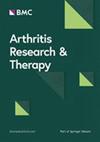利用孟德尔随机化和转录组学分析研究与抗中性粒细胞胞质抗体(ANCA)相关血管炎相关的潜在生物标志物
IF 4.6
2区 医学
Q1 Medicine
引用次数: 0
摘要
抗中性粒细胞细胞质抗体(ANCA)相关性血管炎(AAV)是一种以多器官受累为特征的自身免疫性疾病。早期发现和准确诊断AAV对改善预后至关重要。然而,与AAV相关的生物标志物的研究是有限的。本研究旨在通过转录组学数据分析和孟德尔随机化(MR)来探索AAV的新型生物标志物。分析aav相关数据集(GSE104948和GSE108109)。在GSE104948数据集中鉴定了AAV组与正常组之间的差异表达基因(DEGs)。然后使用MR分析来调查deg和AAV之间的因果关系。选择具有显著因果关系的基因作为候选基因进行进一步分析。采用机器学习算法、ROC曲线分析和表达评价筛选生物标志物。构建人工神经网络(ann),进行富集分析和免疫浸润,建立分子调控网络,预测潜在药物。最后,免疫荧光检测证实了这些基因在anca相关性肾小球肾炎患者肾活检中的意义。PDK4、PSMB10 (IVW, OR >1, P < 0.05)、PPARGC1A和FN1 (IVW, OR < 1, P < 0.05)被鉴定为生物标志物。具体而言,与正常组相比,AAV组的PDK4和PPARGC1A表现出明显的下调,而FN1和PSMB10表现出相反的模式。基于生物标志物创建的人工神经网络在评估AAV风险方面表现出强大的预测能力。此外,在“丁酸代谢”和“脂肪酸代谢”中观察到PDK4和PPARGC1A的共富集。同时,幼稚B细胞与PDK4呈强正相关,与PSMB10呈显著负相关。分子调控网络结果表明,XIST通过hsa-miR-103a-3p、hsa-miR-1271-5p和hsa-miR-23a-3p同时对PDK4、FN1和PPARGC1A发挥调控作用。此外,本研究还发现19种药物对达卡巴嗪、二氯乙酸、硼替佐米等4种生物标志物具有潜在的靶向能力。anca相关性肾小球肾炎患者的肾活检证实,与对照组相比,肾小球中PDK4和PPARGC1A的表达降低,FN1和PSMB10的表达增加。PDK4、PPARGC1A、FN1和PSMB10被鉴定为与AAV有因果关系的生物标志物,为精确诊断和靶向治疗策略提供了潜力。本文章由计算机程序翻译,如有差异,请以英文原文为准。
Investigating potential biomarkers associated with antineutrophil cytoplasmic antibody (ANCA)-associated vasculitis using Mendelian randomization and transcriptomic analysis
Antineutrophil cytoplasmic antibody (ANCA)-associated vasculitis (AAV) is an autoimmune disorder characterized by multi-organ involvement. Early identification and accurate diagnosis of AAV is crucial for improving prognosis. However, research on biomarkers associated with AAV is limited. This study aimed to explore novel biomarkers for AAV through transcriptomic data analysis and Mendelian randomization (MR). AAV-related datasets (GSE104948 and GSE108109) were analyzed. Differentially expressed genes (DEGs) between AAV and normal groups were identified in the GSE104948 dataset. MR analysis was then used to investigate the causal relationship between DEGs and AAV. Genes with a significant causal relationship were selected as candidate genes for further analysis. Machine learning algorithms, ROC curve analysis, and expression evaluation were employed to screen for biomarkers. Additionally, artificial neural networks (ANNs) were constructed, enrichment analysis and immune infiltration were performed, a molecular regulatory network was established, and potential drugs were predicted. Finally, immunofluorescence assays validated the significance of these genes in renal biopsies from patients with ANCA-associated glomerulonephritis. PDK4, PSMB10 (IVW, OR > 1, P < 0.05), PPARGC1A, and FN1 (IVW, OR < 1, P < 0.05) were identified as biomarkers. Specifically, PDK4 and PPARGC1A exhibited significant down-regulation in the AAV group compared to the normal group, while FN1 and PSMB10 showed an opposite pattern. The ANN created based on biomarkers exhibited a robust predictive capacity for assessing the risk of AAV. Furthermore, co-enrichment of PDK4 and PPARGC1A was observed in ‘butanoate metabolism’, and ‘fatty acid metabolism’. Meanwhile, there was a strong positive correlation observed between naive B cells and PDK4, while a substantial negative correlation was found with PSMB10. Molecular regulatory network results demonstrated that XIST exerted regulatory effects on PDK4, FN1, and PPARGC1A through hsa-miR-103a-3p, hsa-miR-1271-5p, and hsa-miR-23a-3p simultaneously. Besides, this study revealed that 19 drugs exhibited potential targeting capabilities towards 4 biomarkers, such as dacarbazine, dichloroacetate, and bortezomib. Validation in renal biopsies from patients with ANCA-associated glomerulonephritis confirmed decreased glomerular expression of PDK4 and PPARGC1A, and increased expression of FN1 and PSMB10 compared to controls. PDK4, PPARGC1A, FN1, and PSMB10 were identified as biomarkers causally related to AAV, offering potential for both precise diagnosis and targeted treatment strategies.
求助全文
通过发布文献求助,成功后即可免费获取论文全文。
去求助
来源期刊

Arthritis Research & Therapy
RHEUMATOLOGY-
CiteScore
8.60
自引率
2.00%
发文量
261
审稿时长
14 weeks
期刊介绍:
Established in 1999, Arthritis Research and Therapy is an international, open access, peer-reviewed journal, publishing original articles in the area of musculoskeletal research and therapy as well as, reviews, commentaries and reports. A major focus of the journal is on the immunologic processes leading to inflammation, damage and repair as they relate to autoimmune rheumatic and musculoskeletal conditions, and which inform the translation of this knowledge into advances in clinical care. Original basic, translational and clinical research is considered for publication along with results of early and late phase therapeutic trials, especially as they pertain to the underpinning science that informs clinical observations in interventional studies.
 求助内容:
求助内容: 应助结果提醒方式:
应助结果提醒方式:


